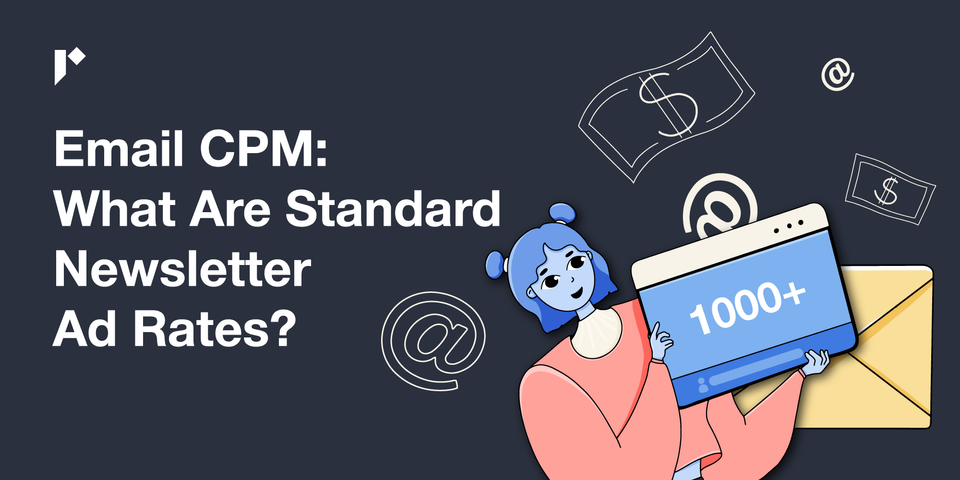Chances are you've noticed email newsletter ads quietly creeping into the newsletters in your inbox. That's because newsletter advertising is a highly effective and growing online marketing channel in today's competitive world.
Think about it. People actively sign up to get that weekly or fortnightly newsletter. If you're a brand, those subscribers form a niche audience that aligns with yours.
If you're a newsletter publisher, newsletter ads can be a nice income stream if you know how much to charge.
So what are the going newsletter ad rates? What are the average email CPM rates? And what other pricing models are there?
Table of Contents
What's an average email CPM?
A standard newsletter CPM is anything from $10 to $30.
Email CPM (Cost per mille) is the price you'll pay for every one thousand newsletter subscribers on the books, regardless of how many people actually open the email.
How do you calculate CPM?
The CPM formula is ad cost/ subscribers x 1000. E.g. ($300/10,000) x 1000 means you're paying $30 per thousand for an email blast to 10,000 subscribers.
Factors that affect newsletter advertising rates
When considering buying advertising space or setting your own email CPM rates, it's wise to view the newsletter stats. If newsletter creators sell ad space, they may have some of these numbers available in their media kit.
Number of subscribers
The first thing many advertisers ask is, "how many subscribers do you have?" Larger newsletters may earn more in newsletter advertising simply because more people are on their books. However, advertising space in a niche email newsletter with precisely the right audience is more valuable to some brands because they know they're reaching their target audience and not paying for disinterested subscribers or fake accounts.
So, one vital action before buying ads or newsletter sponsorship is to check its subscriber numbers on Reletter.
Open rate
Newsletter advertising is useless if people don't open the email newsletters in the first place, so knowing the open rate is a crucial metric. You don't want to pay per thousand subscribers and then discover that typically only 10% will open the newsletter.
The open rate shows you how many interested readers your campaign might reach.
According to Mailchimp, their customers' average newsletter open rate (across all industries and newsletter audience size) had an open rate of 21.33% in 2021-22. But Smart Insights estimates that email newsletters over all industries have a higher average open rate of 29.55% with an average click rate of 1.27%.
Click rate
It's one thing to have many subscribers and another to have a great open rate. But how many people are going to click the link in your advertisements?
The email newsletter click rate shows how many readers were interested enough in your ad copy to look further. As we see above, the CTR (aka Click Through Rate) is likely to be tiny compared to the open rate.
To work out click rates, you need three metrics: the number of emails sent, how many emails bounced back, and how many clicks there were on your link. The CTR percentage formula is emails clicked/(emails sent - bounces) x100.
Understanding your click rates is one way to measure whether your advertisements are paying dividends. Open rates are great, but the conversion rate matters more.
If there is interest in your ad, and the link drives new customers into your funnel, you're more likely to invest in that email newsletter again.
Conversely, it pays newsletter creators to understand their advertisers' CTR too. When your email newsletter produces a consistently high click rate, you can charge higher prices for your ads because you've got the numbers that prove they work.
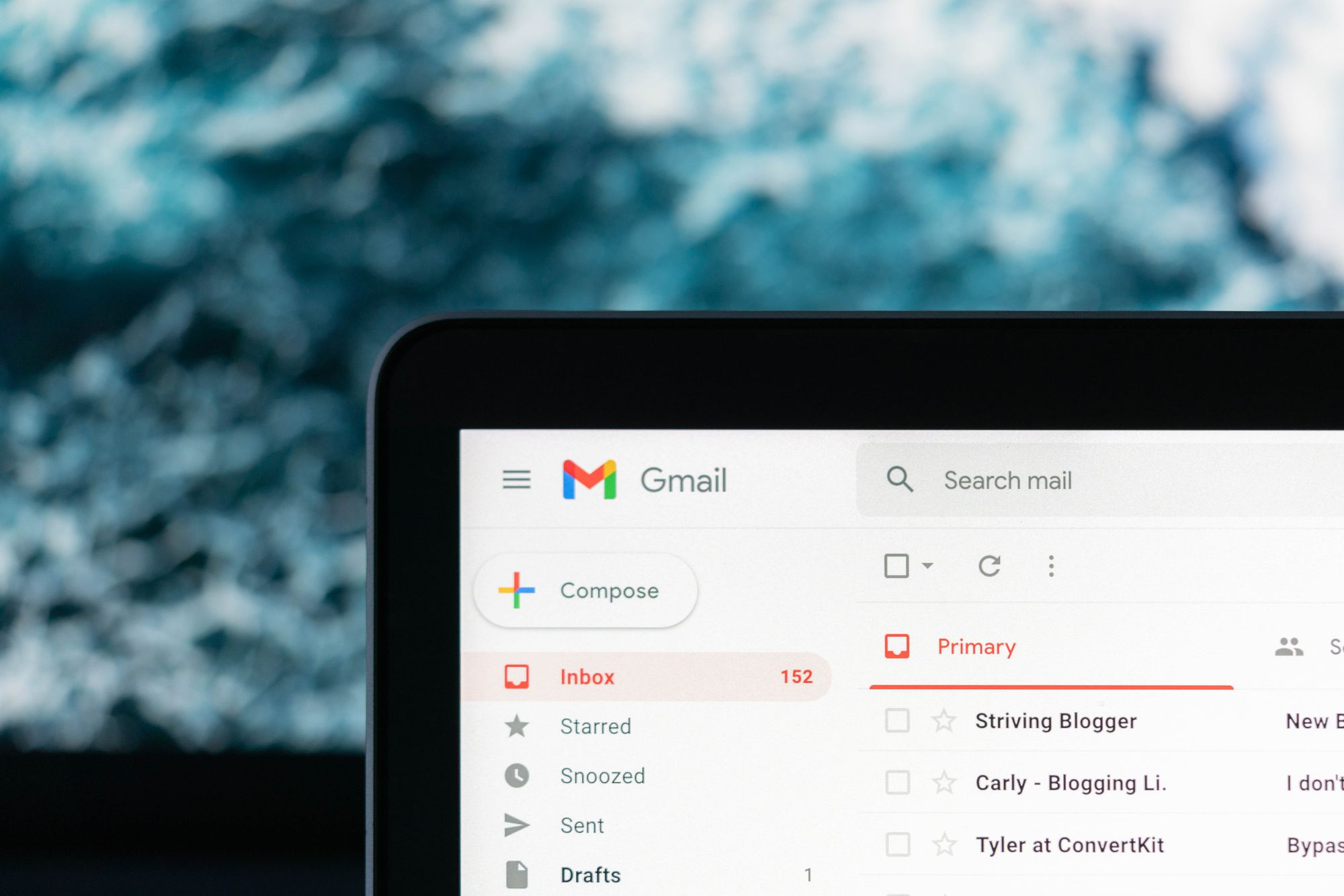
Ad type
Most newsletter advertising takes the form of native ads, i.e., ads included in the newsletter along with the creator's content. However, some brands pay for dedicated newsletter advertising. In that case, the creator sends out a newsletter entirely about that brand, product or service.
Native ads include sponsorship ads (sometimes called custom display email ads) and classified ads (or inline ads.) Sponsorship ads often have images, words, and a link. They're easy to spot and are usually prominently displayed. On the other hand, several classifieds may be grouped together in another section of the newsletter. Each ad includes a few lines of persuasive text and a link.
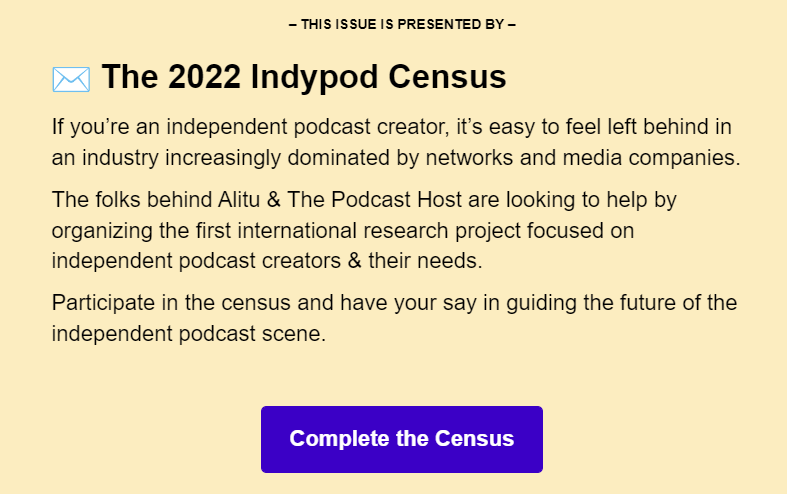
Ad placement
Ad position is another consideration when you're buying or selling ad space. For example, written ads are often placed as an organic part of the newsletter. Readers understand that they're advertisements but often read them because they don't interrupt the flow.
On the other hand, if your brand is running a sponsorship campaign, you may want a header placement (sometimes called banner ads) or a mid-spot partway through. These ads will stand out from the rest of the text so that readers don't miss seeing them.
Ad placements with the lowest CPM are footers, which come right at the end of the newsletter, and may not get the same engagement as those further up.
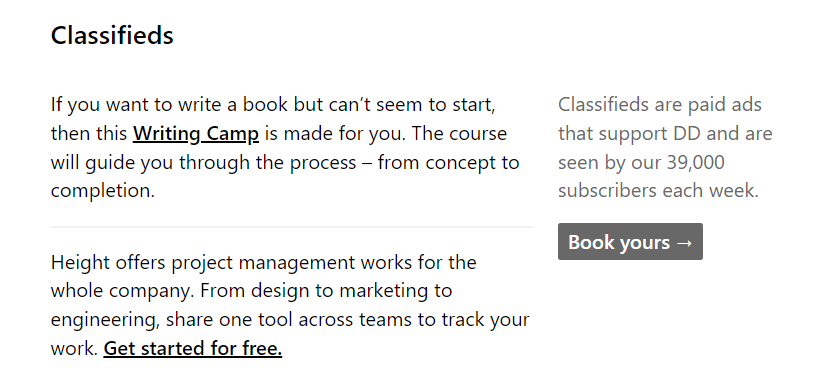
Package size
When selling space for ads, newsletter publishers may offer single slots or packages. Buying one-off ads is likely to be more expensive in the long run than purchasing a package.
Some newsletter sponsors start with a custom display ad in one or more issues, then switch to inline ads later to keep their brand top-of-mind with their newsletter audiences.
Other advertisers prefer bulk buying slots for the same advertisement over several issues.
Newsletter popularity
Successful newsletters are often spoiled for choice when they offer newsletter advertising space. Their newsletter sponsorships are often booked out well in advance, and even other forms are hard to get.
A popular newsletter with proven success rates will charge a premium for email newsletter advertising.
Conversely, a newer newsletter with fewer subscribers might be dabbling with newsletter advertising for the first time. You might get a bargain if the niche topics and audience align with your brand.
Other newsletter sponsorship pricing models
Not all newsletters go by a traditional CPM pricing model. There are lots of other models to explore.
CPO
Email CPO (Cost per 1000 Opens) is the dollar amount you pay for every one thousand people who open the newsletter.
It's worked the same way as newsletter CPM: ad cost/opens x 1000. CPO email marketing is typically more expensive than CPM because you're not paying for the audience members that don't open the email newsletter.
A generalist newsletter going out to a broad audience might charge advertisers $25 to $40 CPO. However, a niche email newsletter with a highly engaged audience might cost you anything up to $80 CPO.
CPC
In marketing terms, CPC stands for Cost per Click, where advertisers are charged for each click on the link in their ad.
Flat fee
Some email newsletters charge a flat fee; no negotiation or formulas are required. It's one price for a sponsorship deal and a lesser cost for an inline ad or package.
Of course, it's wise to investigate their metrics on a newsletter database like Reletter to decide whether the flat fee is a good deal. Your email advertising could be incredibly cheap or eye-wateringly expensive, depending on the subscriber numbers and the open and click rates.
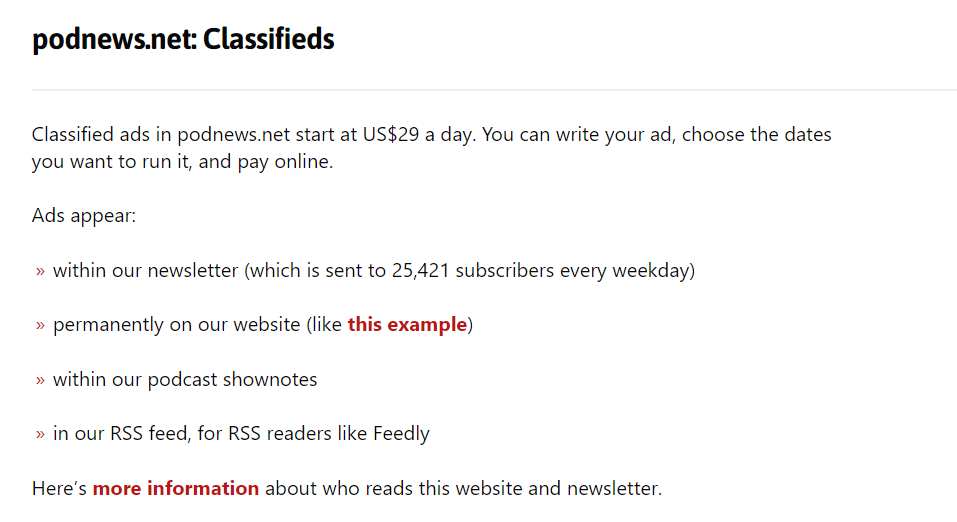
CPA
A business may also want to calculate its cost per acquisition (CPA) when they're thinking about buying ad space. CPA is the total cost of leading one person down your funnel to the point where they click the buy now button.
The CPA formula is surprisingly straightforward: Cost of campaign/conversions.
E.g., the whole campaign costs $1,000/ 100 conversions = $10 per customer.
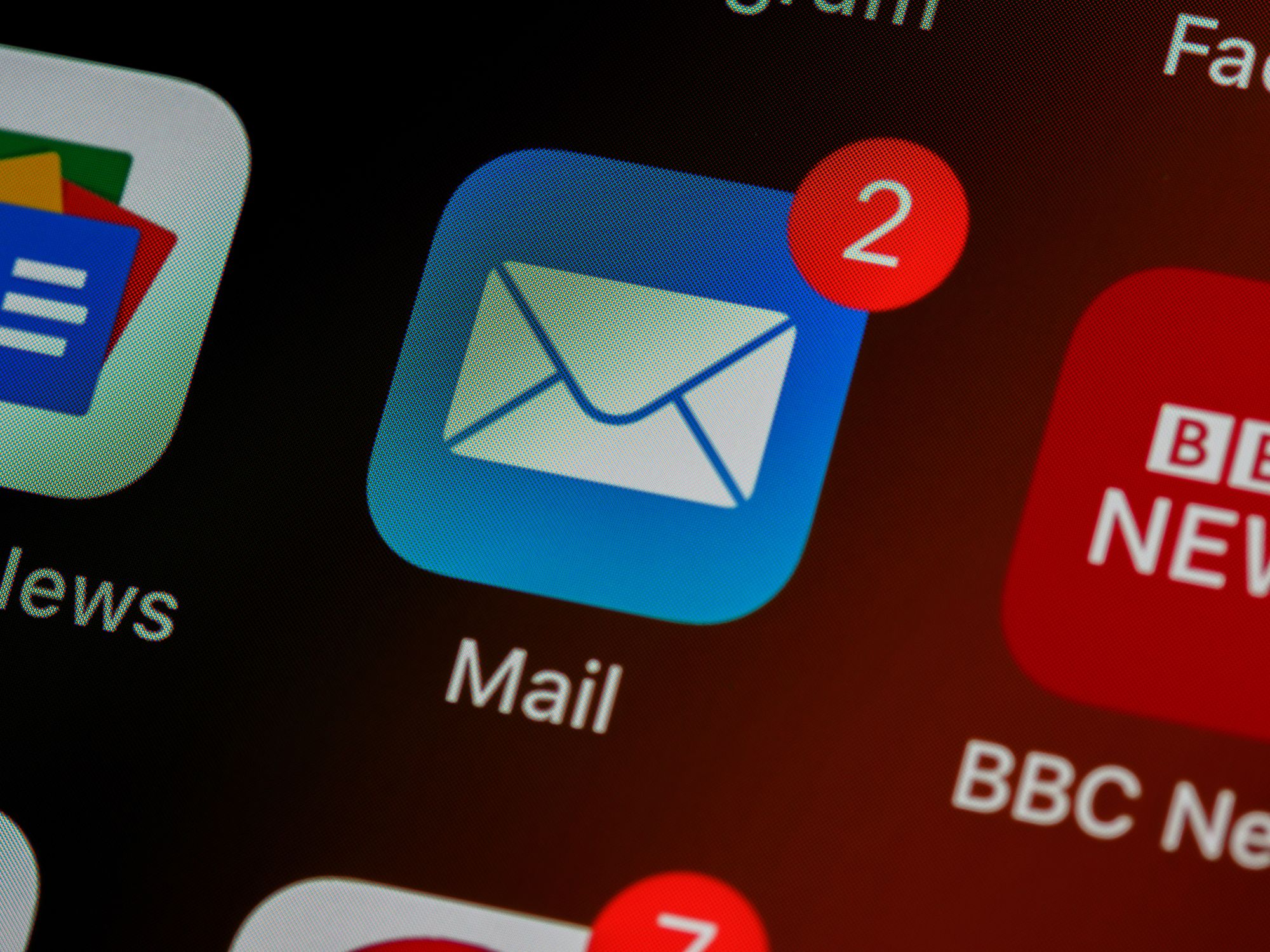
Newsletter expert Josh Spector gave his views about pricing email newsletter ads in episode 9 of his podcast. If you're wondering about finding partners and monetizing your email newsletter, check out this episode of Spector's I Want To Know podcast.
Final Thoughts
If your brand is considering an advertising campaign, email newsletter advertising will help you reach people who need your products. Use Reletter to find email newsletters with your target audience to maximize your ROI.
And when you write a regular email newsletter, verify your page on Reletter to give brands even more data to find you with. Selling ad space could take your newsletter revenue to a whole new level.

